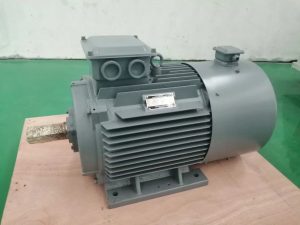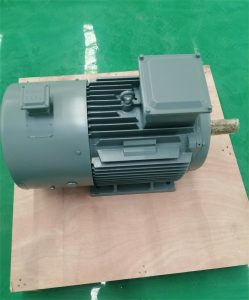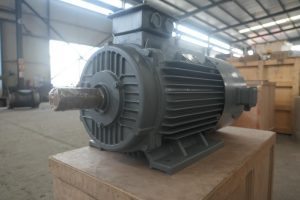A permanent magnet generator (PMG) is an electrical machine that creates negative power with the help of a magnetic field generated by its spinning part. Unlike conventional generator that usually use electromagnets to produce electricity, this technology is way too different. The benefit of this is that permanent magnets produce a predictable magnetic field which requires no input from an external power source. These can be used for numerous applications, most notably renewable energy sectors like wind and hydroelectric power where PMGs are common. They work in organ of electromagnetic induction via the rotation with a rotor comprising permanent magnets converting kinetic energy to electrical”
The advantage of Permanent Magnet Generators vs regular generators is primarily that they are more efficient. PMGs do this by minimizing the power losses of not needing energy to excite the rotor. This should provide for a more efficient transformation of mechanical energy to electricity. PMGs can offer a significant advantage in renewable energy systems, greatly improving the capture of energy for efficiency when deployed especially during changed operational circumstances.
For instance, Permanent Magnet Generators save you plenty of money as they require less maintenance than the traditional Alternating Current Induction Generator. Since PMGs do not have brushes and slip rings as in conventional generators, their wear & tear is significantly less which means reduced maintenance work. PMGs are much more durable than most methods, which will lead to a longer operational lifetime and reduced downtime. As a result, the overall value from PMGs such as consistency over long periods of time in terms of operations is much lower causing them to be desirable for multiple industrial applications.
The attraction of a Permanent Magnet Generator lies in its superior performance along with increased competition within the industry. They have widespread application in wind turbines where consistent output is crucial especially when the winds vary. Hydroelectric plants, portable generators and backup power systems also make use of PMGs.
Permanent Magnet Generators are also based on performance and electricity output, which can be greatly affected by the environment.
One of the most significant factors that affect PMGs performance is temperature. In more extreme weather environments such as the cold winter or hot summer temperatures, this can also change how it will operate. It means operating temperatures not at their best reserve more resistance and energy losses. Manufacturers frequently supply this with performance specifications which allow users to tune the sensors based upon their environmental limits.
Wind speed is an essential component of the performance and health condition evaluation of PMGs in wind energy. This output responds to wind speed such that they will produce more electric energy at higher speeds. Optimal positioning of the turbines to capture the best wind flow is equally relevant. The effectiveness of turbine placement to generating energy varies — landscape, surrounding structures, and rotor design all play a role.

Production capabilities of Permanent Magnet Generators are inherently sensitive to electrical load and demand requirements. Opened by changes in load, the variable governs how hard — or less so — a generator has to work and thus whether more or less electricity flows. Correct application of generator size to load demand is necessary in order for PMGs to run within their optimal efficiency envelope. All these systems must have some sort of stabilizing generation in place to prevent efficiency losses when demand oscillates all too frequently.
Although not cited specifically, Permanent magnet Generators are proven by many other studies to function well in real life and they definitely will provide safe and long term electrical supply. Such studies usually consider how PMGs work under various load conditions and weather parameters. The results from those tests often display the benefits of PMGs when compared to a conventional generator in terms of energy production and throwaway capability.
Field data collected from operational PMGs frequently differs from laboratory testing outcomes. Laboratory conditions tend to simulate ideal scenarios; however, real-world deployments contend with various external variables like temperature fluctuations and wind patterns that can impact performance. Through continuous monitoring and analysis, more accurate predictive models are being developed to bridge this gap between laboratory results and field performance, providing better insights for potential users.
The long-term reliability and efficiency of Permanent Magnet Generators have been consistently demonstrated in numerous deployments. Over extended periods, PMGs maintain their performance levels despite potential stressors. Their robust design allows them to endure harsh operating environments while still delivering reliable electricity generation. As a result, PMGs are increasingly recognized for their durability and cost-effectiveness, marking them as a key player in sustainable energy solutions.
Enneng is a prominent player in the manufacturing of Permanent Magnet Generators, continuously advancing its product offerings to cater to evolving energy demands. Their range includes generators designed for various applications, including wind turbines and hybrid systems. Each product line integrates cutting-edge technology to maximize efficiency and reliability. With a focus on the renewable energy sector, Enneng is committed to providing reliable solutions that address both environmental and performance challenges.
Enneng’s Permanent Magnet Generators are characterized by innovative features that set them apart. These generators employ high-grade permanent magnets that ensure superior energy conversion rates, along with advanced cooling systems that optimize operational efficiency across diverse temperature ranges. Additionally, Enneng integrates intelligent control systems that facilitate real-time monitoring and adjustments, leading to enhanced output consistency. The rugged construction of these generators allows them to perform effectively in challenging environments, making them suitable for both coastal and mountainous installations.
The future of Permanent Magnet Generators looks promising as advancements in material science and engineering continue to evolve. Anticipated innovations include the development of lightweight, high-efficiency magnets that will further reduce production costs and increase output.
Selecting the right site is critical for maximizing electricity output with Permanent Magnet Generators. And a wide variety of performance levels are factored by things like where you live, how easy it is for clients to get there and the surrounding terrain. The perfect site is one that has few natural winds or water flow obstructions, allowing PMGs to use the raw power of wind or water with minimal interference. In addition, environmental assessments can identify possible locations where energy capture could be optimized while adhering to regulatory requirements.
To maintain the function of Permanent Magnet Generators, proactive maintenance strategies are necessary. Frequent checks and cleaning of parts can help prevent dust collection, which could impede airflow or cause wear. In addition, electrical outputs should be periodically tested so the power provided can be identified as soon as there is a defect. With predictive maintenance, operators can predict when the PMGs will breakdown and take necessary precautions to ensure as little downtime as possible hence improving overall efficiency for their long life.
Utilization of Permanent Magnet Generators with different renewable energy systems can increase the power output. Combining PMGs and solar photovoltaic systems can form different system that plays to the strengths of both technologies. These types of configurations allow for a steadier flow of energy, as solar can fill in the gaps during times where wind production slows down. Further, smart energy management systems could better use the distributed generation produced and meet on-site demand as well as grid requirements increasing total efficiency.

The electricity output of Permanent Magnet Generators depends on a number of variables like the environmental conditions, application practices and integration strategies in use. PMGs are sensitive to variation in temperatures and they must be operated within their manufacturers’ specified temperature ranges. Selecting a main site and maintaining it well also help maintain the performance high throughout time. In addition, the integration of PMGs in renewable energy systems allow for the maximum output when utilized efficiently that effectively addresses both sides: from capture to demand.
There are certain strategies that increase the efficiency of Permanent Magnet Generators on producing electricity. First, accurate siting based on wind or hydrological resource assessments can improve project performance. Similarly, the most important thing is not to buy a new HVAC system but clean & timely repairs should be done on inspections. Further, by pairing PMGs with other renewables technologies the system can make use of more energy sources in total providing a better overall power stability. Adopting these points will enable the highest possible electricity yield in true conditions highlighting Permagnanet Generators significance towards a sustainable energy generation.